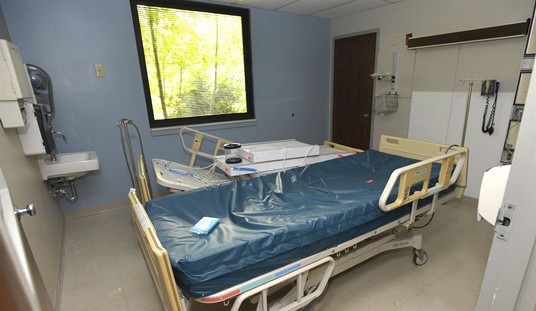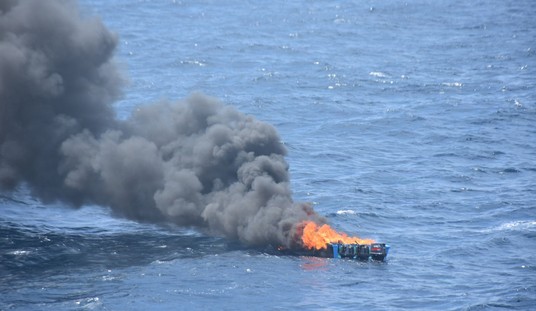The DoD Acquisition Community has spoken on the F-35 Joint Strike Fighter. According to a recent NRO article they have concluded the following: “The F-35 program is a mess; it is unaffordable and will not be able to fulfill its mission.”
I work in DoD acquisition and find that to be a heavily freighted commentary that oversimplifies the situation at hand. An unaffordable program is a very specific technical descriptor. It describes an acquisition program that is estimated to cost far more than the acquiring service originally signed up to pay for. Unless the USAF Comptroller runs his books like a Hellenic Bank, the F-35 could meet this description. Its current Lifecycle Cost Estimate equals approximately $B 1,500. This was originally estimated at approximately $B 800. That would suggest inexcusable cost growth that endangers all other USAF acquisition priorities. Political leadership has taken notice.
[mc_name name=’Sen. John McCain (R-AZ)’ chamber=’senate’ mcid=’M000303′ ], R-Az., in 2011 said “We cannot afford aircraft that doubles or triples the estimated cost.” [mc_name name=’Sen. Claire McCaskill (D-MO)’ chamber=’senate’ mcid=’M001170′ ], the Democratic Senator from Missouri, told Pentagon leaders that she “need[s] to know whose fault this is.” Yet the program continues to be funded. In response to lawmaker complaints, former Defense Secretary Robert Gates restructured the program and fired its manager. Current Secretary Leon Panetta has also called for improvements to the program, and has said the delays are unacceptable.
The real meat of the current F-35 critique involves the claim that it “will not fulfill its current mission.” This incorporates two possible problems. One problem involves failure to meet mandated system requirements. NRO roughly describes this aspect of the current system failures below.
For this trillion-dollar-plus investment we get a plane far slower than a 1970s F-14 Tomcat, a plane with less than half the range of a 40-year-old A-6 Intruder, a plane whose sustained-turn performance is that of a 1960s F-4 Phantom, and a plane that had its head handed to it by an F-16 during a recent dogfight competition.
The most frightening aspect of this involves the Force Protection Key Performance Parameter that all DoD systems are required to fulfill. This requirement mandates that American military personnel can survive in combat while using the gear. That isn’t what happened in a recent exercise against legacy F-16 Fighters.
The F-35 pilot came right out and said it — if you’re flying a JSF, there’s no point in trying to get into a sustained, close turning battle with another fighter. “There were not compelling reasons to fight in this region.” God help you if the enemy surprises you and you have no choice but to turn. The JSF tester found just one way to win a short-range air-to-air engagement — by performing a very specific maneuver. “Once established at high AoA, a prolonged full rudder input generated a fast enough yaw rate to create excessive heading crossing angles with opportunities to point for missile shots.”
Opponents of expensive military procurements or of big government Inc. may fondly remember the movie “Pentagon Wars.” This movie has a scene that describes the 2nd reason that the F-35 may not be performing in accordance with requirements. The requirements may well be ridiculous.
In Pentagon Wars, rooms full of officers brain-stormed an ideal Bradley Fighting Vehicle with no reference to any engineering constraints or the laws of physics. This led to an unrealistic and unworkable set of requirements. This caused the Bradley to have severe vulnerabilities. The F-35 may well be a grotesquely over-engineered program from the standpoint of requirements generation.
So at the present juncture, spending more dollars on the F-35 can produce 1 of 2 sub-optimal outcomes. It can be a Bradley or a Comanche. If the F-35 is determined to be like the Bradley Fighting Vehicle, the decision-maker assumes that with fundamental reform, the F-35 program can be salvaged and produce a usable hardware. If this is the case, The Pentagon needs to determine how much additional work is needed to salvage the F-35 and how much this would cost. If the resulting system really would justify what would probably now exceed $B 2,000; they should humbly go about cleaning up this horrific mess.
If the F-35 is deemed to be a Comanche, than the DoD community has concluded this program will not succeed at ever meeting its requirements even if they were legitimate needs vetted against standard physics and engineering. In this case, the F-35 needs to be grounded. The money needs to go back to the USAF so that they can use it more effectively to defend the nation. As someone who has worked in DoD Acquisition for over a decade, I do not recommend this lightly. Failure has consequence and cannot be excused in the design and engineering of a front-line combat system. Thus, the F-35 must be deemed salvageable and set on its get-well path or it needs to be wound-down immediately.














Join the conversation as a VIP Member